This is my gray hair transition journey. You too can learn how to transition from dyed red hair to natural gray with a clear, step-by-step process. Tips for blending, maintenance, and embracing your gray journey.
I decided to go gray after many, many (many, many) years of dying my hair. Since I am going from red to gray/silver/white, and not growing it our cold-turkey, the transition required some help from a stylist.
Transitioning Dyed Red Hair to Gray: All My Steps, Part 2
A month after the first first high and low lights session my gray (actually even more white in the front than I thought) is very noticeable to me. While there wasn’t really a demarcation line, I was well past the “sparkle” phase. The hair near my temple and ears is all white, all my hair-parts show white, and my scalp is back to white against the color, so I started to look like I have a few bald in patches again. No matter how I parted or pulled my hair straight back, I could not cover the white or gray anymore (it did look better pulled straight back than parted).
The color from the highlights and low-lights had not faded. I did K18 for six washes after that first procedure. I also figured out when I needed to start the K-18 again six washes out from the next highlight/low-light job (yes, I am loony enough to have figured that out). I wanted my hair as healthy and strong as possible for more processing.
I already noticed a bit of fly-away tendency in the white /gray hair. I have had some frizzy hair since moving to Florida and it took me a while to get down a hair routine that calmed that down (I never had frizz up north or when we snowbirded in St Augustine), but this is more unruly hair than anything else. A little extra conditioner on those areas has helped tremendously, but I am keeping an eye on it.
How ironic it would be to transition to gray so I could forget about the salon and then have my hair go crazy because it wasn’t being dyed! And it happens. Gray hair can be unruly! I do Olaplex 3 to smooth things on the top layer of my hair, and that helps.
If you are wondering … I have a lot of fine hair. This is interesting because I have Graves disease and a big negative to that thyroid disease is thinning hair and hair loss. Me? I have more hair now than I did at 21. Because of course I do.
My hair care routine is very basic:
● I wash my hair every three days. If it is dirty or I have an event to attend, I will wash it every two days (this seldom happens anymore). I use Kérastase shampoo and conditioner. I double wash, and then use conditioner . I mask once per month.
● I discovered Kérastase when my shampoo ran out on a trip to Italy and I stopped at a local salon and that is what they were selling. I’ve tried a number of products including Oribe, Bumble and Bumble, Living Proof, Redken (and more!) and kept coming back to the Kérastase working best for my hair. I would have expected any L’Oreal product to work equally as well, but clearly they have different formulations across their brands.
● When I have finished washing my hair, I towel dry it (regular towel, I don’t use a microfiber, although I do sleep on a silk pillowcase).
● Once towel dried, I spray in leave –in conditioner and brush through with a Wet brush.
● I go have a cup of coffee, read email, etc., and about 45 minutes later I head back to finish drying and style my hair. I seldom have to rough dry with my hairdryer as the air has dried by hair enough to style.
● I do apply heat protectant.
● When home, I typically use my Dyson Airwrap to style my hair. I can usually go three days with my hair feeling clean and spiffy using this appliance. I notice that when I use a hair dryer (also Dyson + ceramic round- brushes) to blow dry my hair, my hair feels dirtier on day three.
● If my scalp feels oily on day 3, I will use Living Proof dry shampoo. I spray it at my roots, wait a minute, and then use my fingers to move it and get it absorbed through. On the evening of day 3 because I am washing my hair the next day, I apply K18 oil. I also use Kérastase spray oil if I am not using the K18 oil, and like that very much.
● When not doing intense treatments routines, I use K18 and Olaplex 3 once per month for maintenance.
I started this regime about three months after moving to Florida as I was at my wit’s end trying to make my Florida-hair look at good as my New York-hair did. Hubby added a water filter to the shower head and then I worked very hard to find shampoo, conditioner, leave in conditioner, heat protectant, and styling products that worked down here with the high humidity. The Florida humidity can frizz even the tamest of hair!
My second gray transition appointment was more highlights and low-lights, but this time she did about 90% of my hair.
This was an interesting production.
She started with the front, top of my hair this time, and then moved to the sides and to the back. Because it took so long to foil my hair (I have a lot of hair) the front foils were pulled out long before the sides were done foiling, and the sides were pulled out before my back was finished foiling.
She layered dark and light in a pattern using different colored foils for the light and for the dark. At the end of “cooking” for 40 minutes, the light foils were pulled out and the bleach was “washed off” with a very wet hand towel (drop and wipe). This was done because she couldn’t bring me to the sink as too many of my foils were still “cooking” and some hair had not been foiled yet!
When finished and the foils were removed, I was sent over to the sink for a wash and a toner.
In all, I was in the chair 5 hours this time from start to finish, and that included my haircut and style.
The results were startling.
After growing my hair for almost two additional months, we noticed my hair was white around my face, sides, and nape area, but most of the rest of my hair was salt and pepper gray/silver with a little bit of white. It will be interesting once the white streaks grow in to see what face framing they create.
When she was finished with my hair and turned me around, my eyes widened! I had not had “dark” hair for nearly 40 years. When wet, my hair looked quite dark, almost black to my eyes (it wasn’t). Once she dried my hair I could see the streaks of gray and a few of red and light brown hair streaks that were leftover and had not yet made it to the high-low lighting process.
This was moving closer to what I had envisioned.
While the photos do not show it, my hair was (to me) very, very dark.
Because of all the streaking, the “bald spots” on the front of my head went away. The gray, white, red, and brown blended very well together, so there wasn’t the optical illusion of a “bald spot” which happened from the white against the red. The longer my roots grew, the more those spots developed.
My third appointment was set up for eight weeks later.
The midway portion between sessions two and three has showed some large white/gray areas. Once again the front look like it has “bald spots” as the white hair grows out and is against dark hair. I have gotten a LOT of compliments on this portion of the transition. The hair looks lovely, especially in the back. I have blonde/white wings framing my face and a ton of silver glitter on the top of my head.
I have not been good about doing K18 this cycle. We went away for three weeks and I had a professional blow-out three times during that period. The ship’s salon does not use K18. I did K18 my hair when I washed it myself, however.
Note: This is the second in a series of posts about my gray transition journey. I hope you will stay with me for my monthly update on the highs, and lows, of transitioning to grey/silver/white. My multicolored hair journey! You can read my initial post here.
● If you enjoyed this post, be sure to sign up for the Ann’s Entitled Life weekly newsletter, and never miss another article!
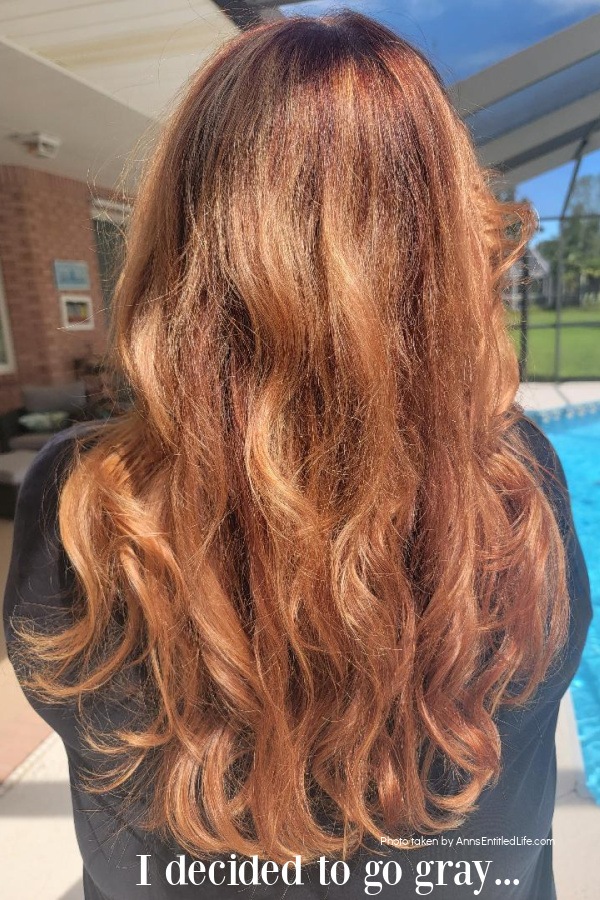
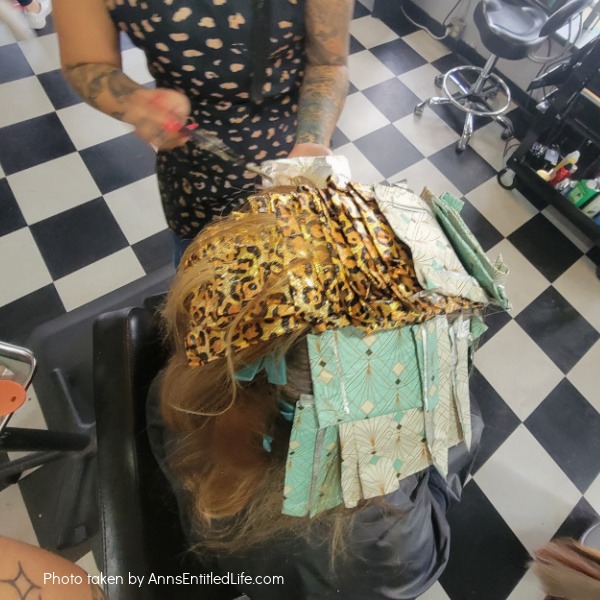
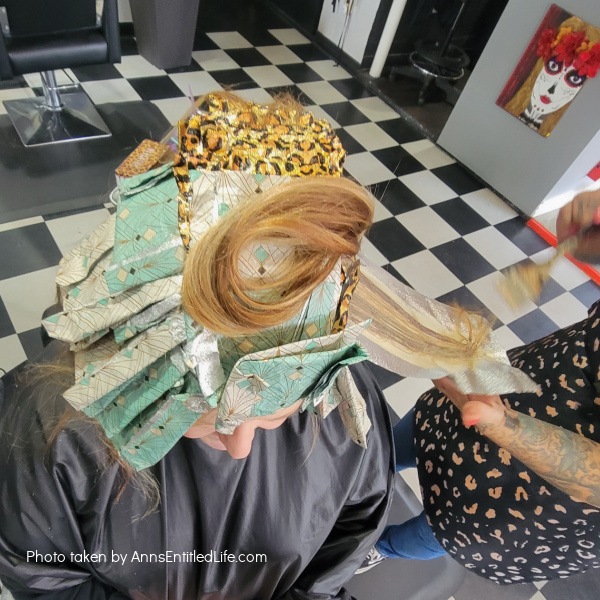
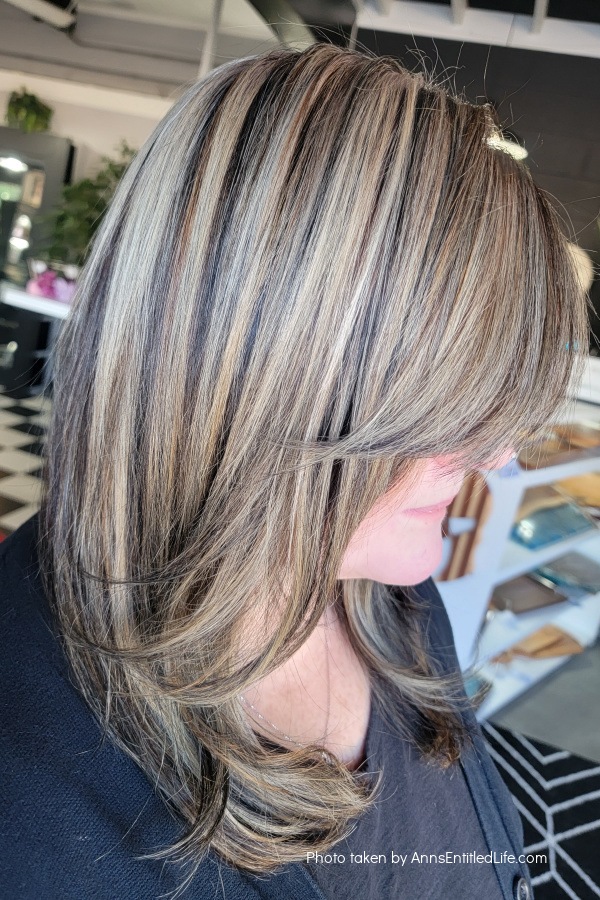
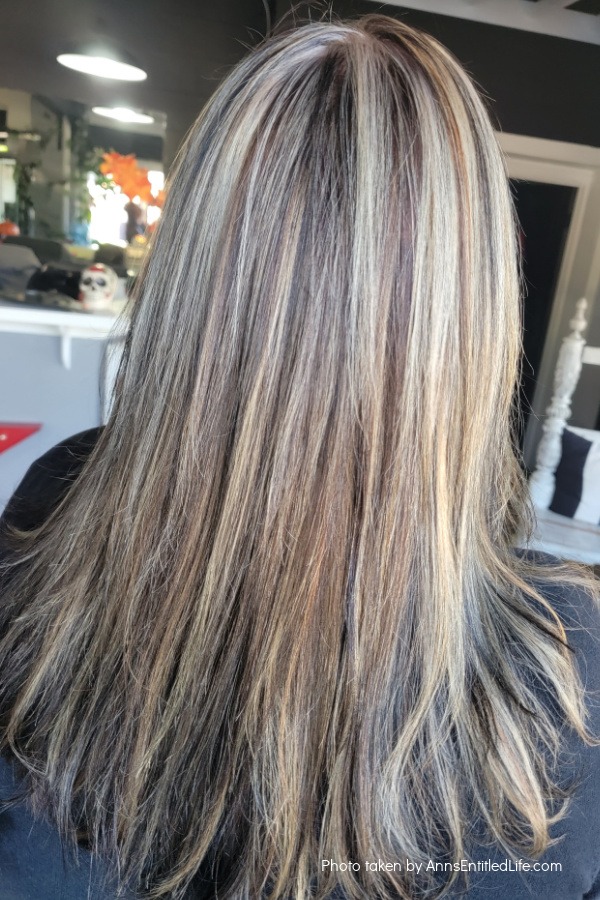
Jann Chandler says
Really a truly interesting article, and of concern to me because lately I’ve been trying to decide if I should just let my gray hair take over and stop dying my roots altogether. I have naturally dark brown hair, and the roots in my scalp are first to start showing the gray, every few weeks after I color them myself. I’m just so tired of going through the dying process at home, even with the easy-to-use products I buy (Revlon, Clairol, and Olia). So reading your experience going through everything is a great way for me to kind of make up my mind as to whether I want to go all gray or keep dying my hair. Thanks for the details about your process and the products you’ve been using. I’m sure you are happy with the results!
Ann says
Good luck with whatever you decide, Jann!
Ann